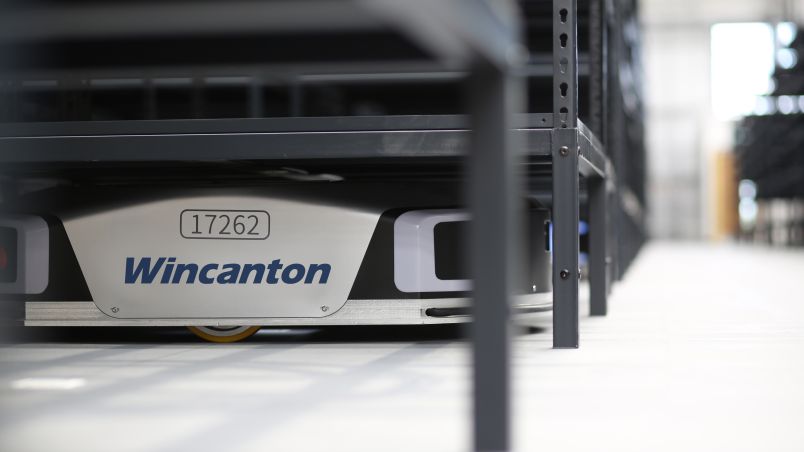
2020 delivered unprecedented challenges for businesses across the UK.
The grocery sector remained operational throughout, with consumers’ reliance on supermarkets and retail outlets to keep cupboards stocked brought into sharp focus.
As many of the trends of 2020 will continue into 2021, we spoke to Wincanton’s Managing Director for Grocery & Consumer, James Hurrell, to discuss what to expect over the coming 12 months and beyond…
Q&A
How are the major grocers going to adapt their operations to keep pace with the online shift?
2020 was the year the online shift across the grocery sector accelerated rapidly. According to Kantar, more than six million UK households bought from a grocer via their online channels throughout November, which was a record high. Grocers more than doubled their online capacity to meet customer demand.
Although the COVID-19 pandemic has influenced this evolution, going online for groceries isn’t a trend that will be going away. Because of this, grocers are continuing to adapt at pace to meet increasing consumer demand.
These adaptations will vary from business to business, but we’re expecting an even greater move towards online fulfilment centres – an area Wincanton is involved with in partnership with Waitrose – and the repurposing of existing stores and property to better serve the eCommerce market. Both are interesting approaches to address the challenges of scaling up operations quickly. An important consideration will be the delivery of customer and brand experience through new and fast-growing channels.
While newer entrants to the grocery space have been able to chip away at the established retailers over the past decade or so, having a large network of fixed assets, which is the case for many supermarket chains, could now help create competitive advantage. This well-established footprint will increase their ability to offer consumers the mixture of pace and convenience they expect, along with the development of more collaborative supply chains.
Automation, robotics and artificial intelligence (AI) will play an ever more important role in increasing efficiency, resilience and capacity. These capabilities will enable grocers to keep speed with changing consumer demand and enhance their abilities to make better, more informed supply chain decisions.
Will home deliveries replace store visits as the consumer’s favoured route for the ‘big shop’?
It’s not that simple! Consumers will demand ultra-convenience, and access to all channels at all times to suit them. Physical shopping is likely to become more experience-led, where “destinations” will prompt a rethink of store layouts and use - for example, showrooms, displays and dining facilities.
How can retailers and grocers adapt amid pressure to be ‘greener’ and more sustainable?
Retailers and grocers have well-established sustainability programmes and work actively across their supply chains to deliver these.
When it comes to physical products, repackaging is key. Moving from single-use plastics to cardboard, or reusable packaging where possible, will continue to have a huge impact environmentally. The modern consumer will increasingly be driven by a greater sense of environmental responsibility, and this is already a key priority for many consumer brands.
From a logistics perspective, increased deployment of electric vehicles and the use of alternative fuels is something that we are doing more of with our customers. We are also facilitating collaborative supply chain initiatives between grocers and consumer brands – creating new, collaborative ways of working resulting in both financial and environmental benefits.
What impact has the COVID-19 pandemic had on collaboration between supply chain partners and grocers?
One of the very few positives from 2020 is the greater appreciation of collaboration. Organisations across supply chains, and even competitors, are working together in new ways.
We are seeing an increasing trend in collaborative warehousing and transport – delivering cost benefit through resource sharing and environmental benefit by taking trucks off the road. We are unlocking further efficiency by creating collaborative supply chain planning platforms.
So, how can grocers adapt to the major challenges of 2021?
UK consumers will remain price-sensitive, perhaps especially so as the economic implications of COVID-19 begin to bite. Grocers and consumer brands are likely to be under pressure to create value that can be invested in price.
Changing consumer behaviour is driving volume out of the most profitable channels and into more expensive channels to serve for grocers. These are the channels that will require investment and adaptation. To remain competitive, grocers will need their operations to be as efficient, lean and effective as possible while retaining the agility to respond to growth opportunities. Working with established partners can create an extension of organisational capability and improved agility.
At Wincanton, we have learnt that we are far more agile than even we realised through 2020. We helped to deliver a number of COVID-19 related peaks and a different kind of Christmas – often working with much less notice than we might ordinarily expect. We rapidly implemented new and safe working practices, adapting to changing guidance and laws. We saw our people design and implement processes quickly, and train others to create the safest working environments for our colleagues.
2020 taught us that we are even more adaptive and resilient than we thought we were, and that we should have confidence in rising to whatever challenges 2021 might bring.




